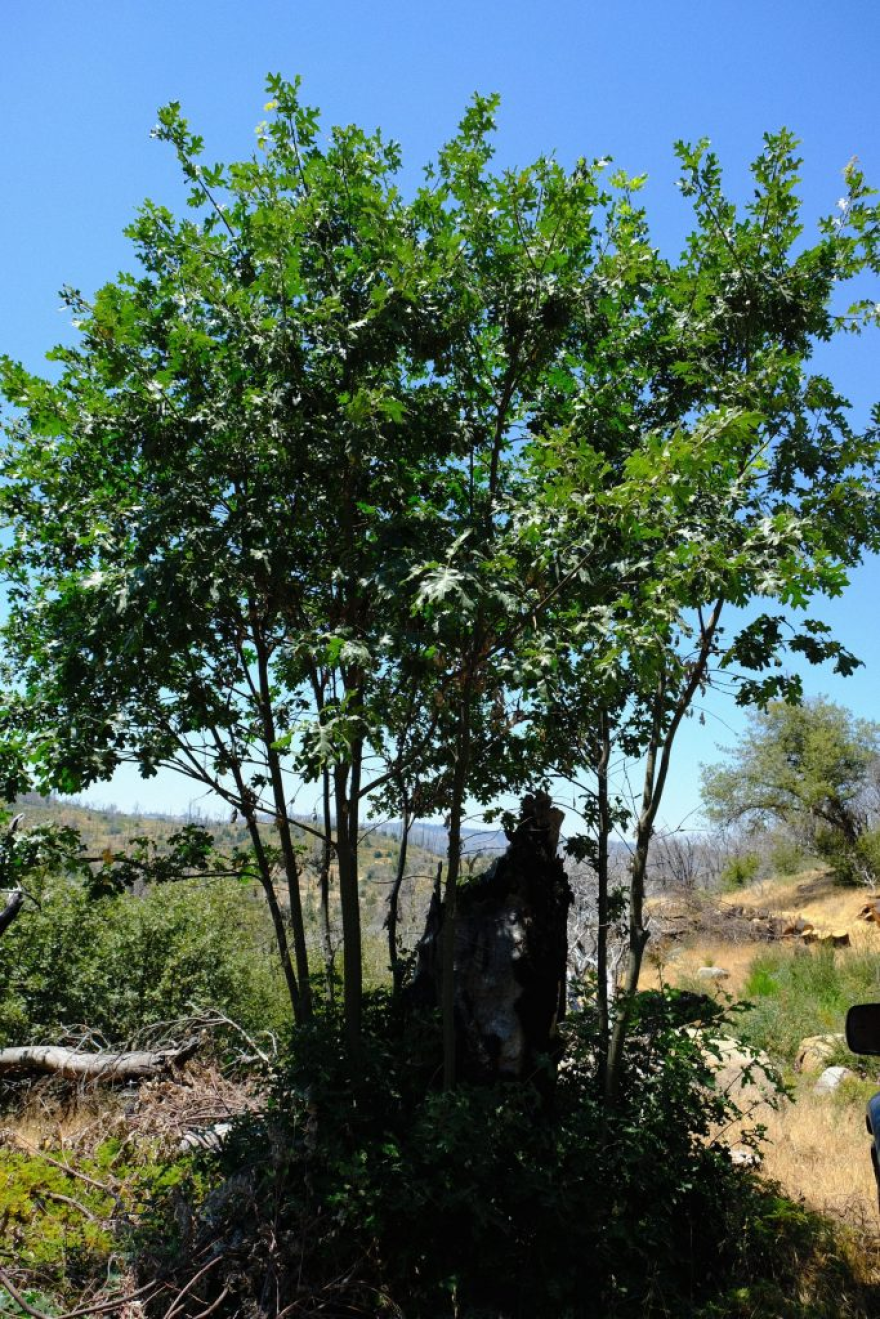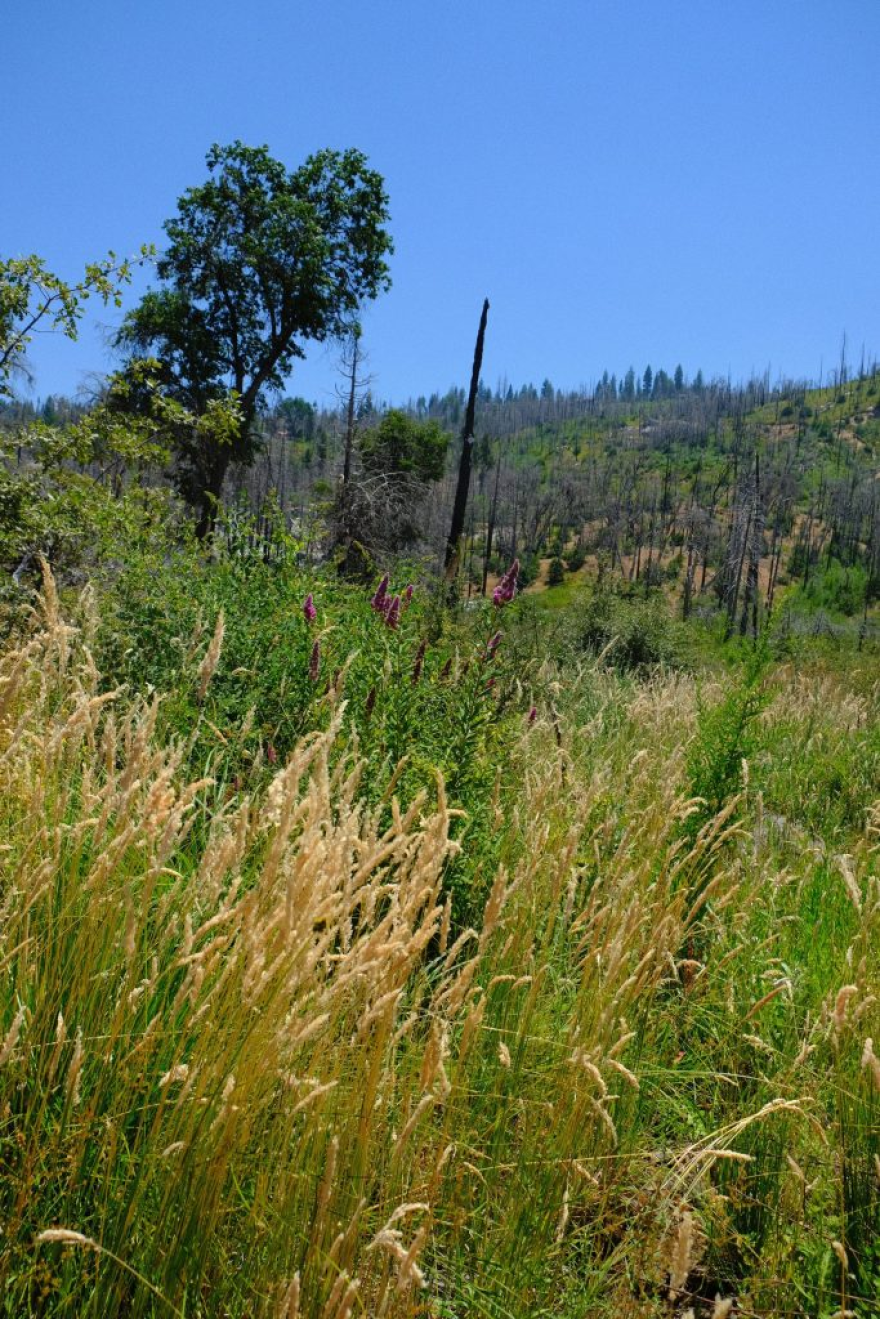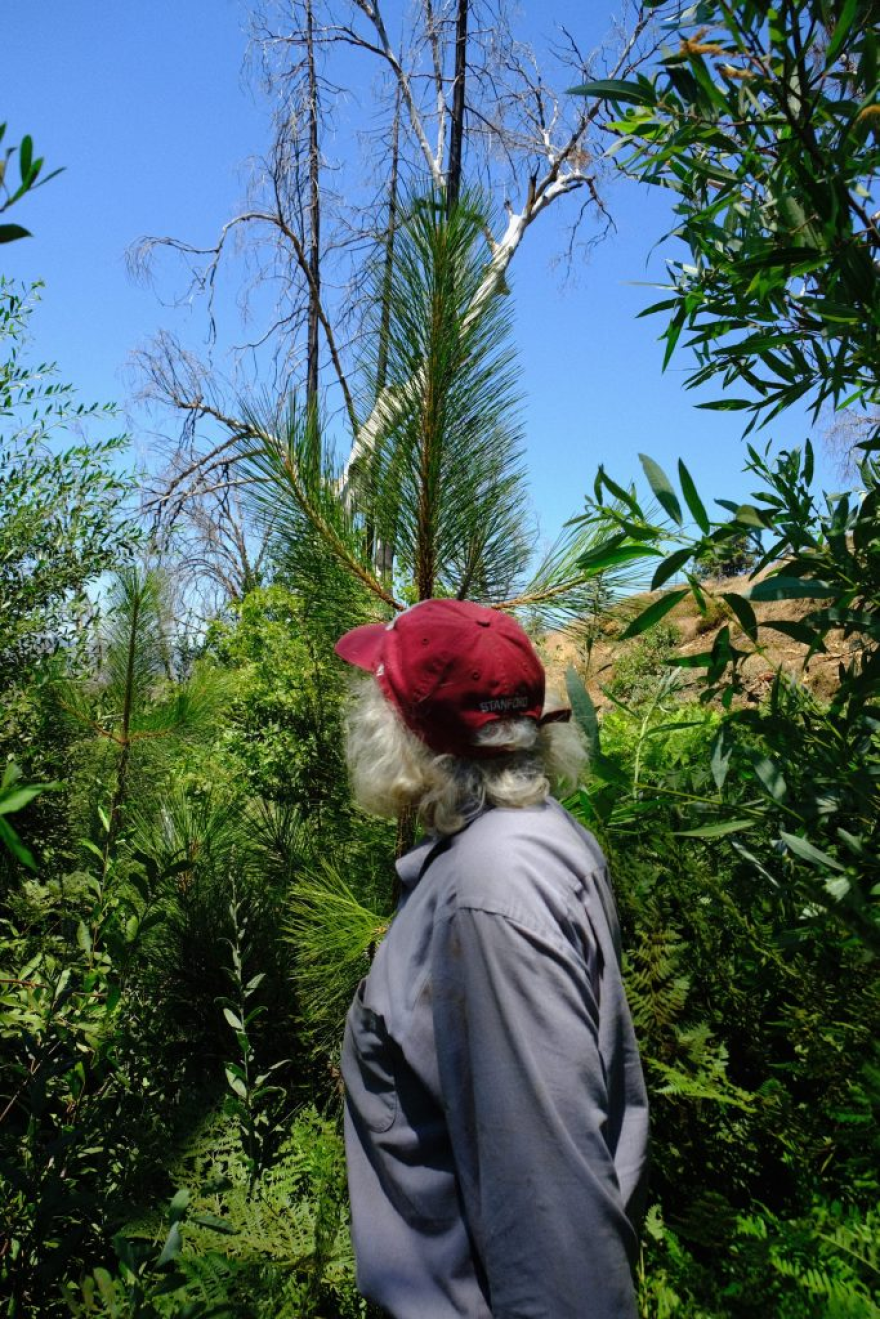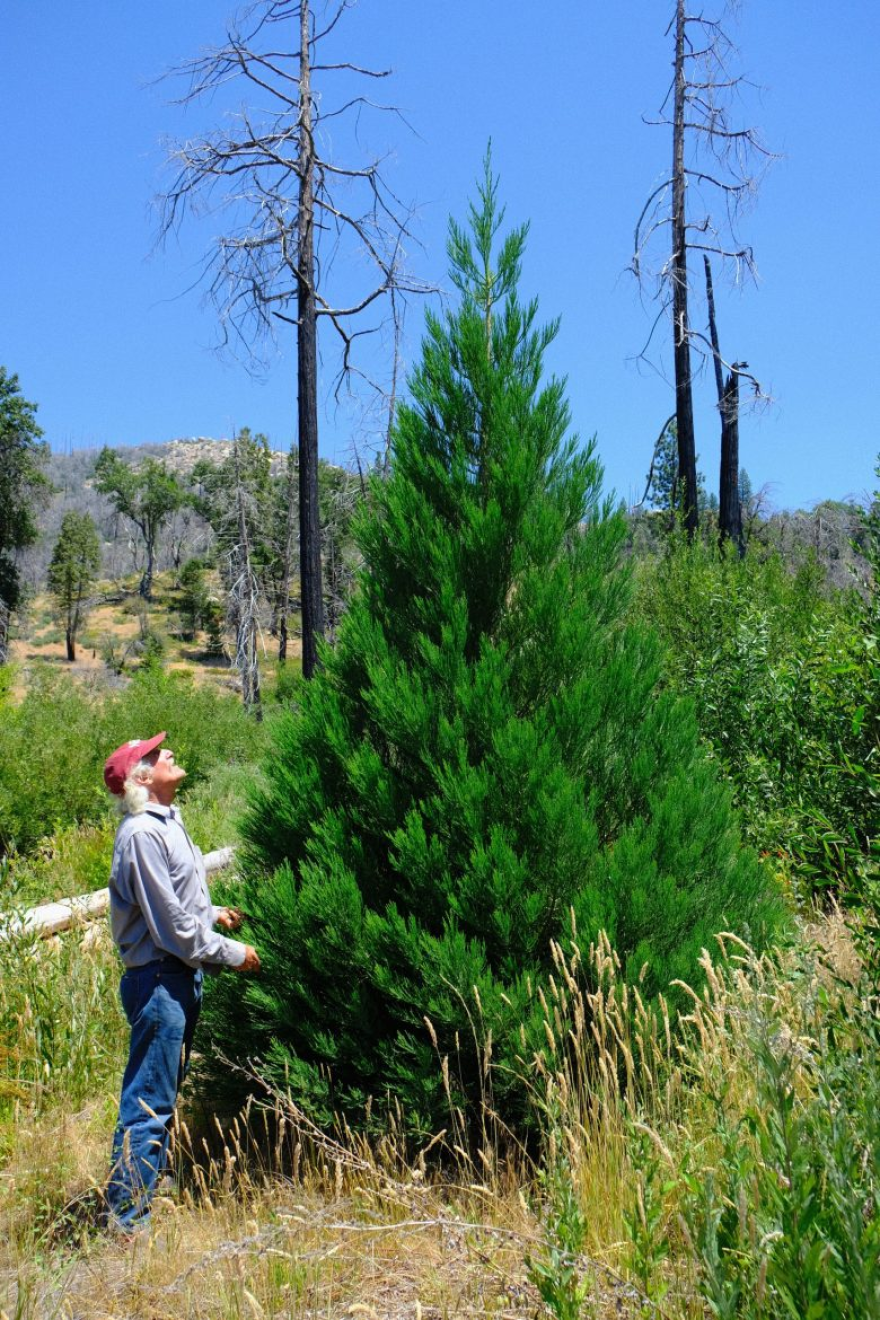This story was originally published by Fresnoland.
A folk singer from the hills above Fresno has an answer to a set of questions shaking California to its core.
Standing on a ridgeline that was Ground Zero for one of the most intense wildfires in American history, Jemmy Bluestein, standing all of 5 ‘8, 160 pounds, didn’t flinch. He and his friends stopped the 2020 Creek Fire near Shaver Lake in its tracks — an achievement made all the more miraculous because he was smack-dead in the path of a 50,000-acre patch of fire which burned so hot it sterilized the forest soil.
“It was coming in through here like a fire hurricane. It scorched us in minutes,” says Bluestein, a Shaver Lake-area folk singer, about the 2020 Creek Fire. “But then it slowed down and halfway across the property, we stopped the Creek Fire. Basically, this didn’t happen virtually any place else.”
Last year, the Earth’s average temperature bypassed the tipping point in which worldwide ecosystem collapse is all but assured, and California is quickly entering a “new normal” of ever-bigger fires of which the Creek Fire is the paradigm. Each year, the Golden State struggles to distribute this growing risk of destruction, forcing new questions of whether to abandon communities entirely as the cost of rebuilding skyrockets.
But Bluestein’s journey with a tiny patch of forest near Shaver Lake shows that this emerging horizon of global disaster is far weirder, and also more fun, than you think.
Giant Sequoia saplings already 15-feet tall
Get in your car and drive northeast out of the relentless heat of Fresno’s suburbia for about 45 minutes. Along Auberry Road, at a place called Dogwood Mountain, Jemmy Bluestein’s place this summer looks and feels like a window into a different world.
A chorus of red-tailed hawks fly over-head, circling a giant chain of Sugar Pines, Oaks and Cedars that miraculously survived the Creek Fire. The September 2020 blaze spawned fire tornadoes, trapping people in lakes and sending a nuclear-bomb sized cloud of smoke across the Valley floor.
Along a hillside near the entrance to his ranch, even the faintest traces of life that remained from the fire have sprung back. Buried under two feet of soil, shoots of new oak form a fresh green crown around the blackened stump where an Black Oak Tree once stood.
“They’re stump sprouting,” Bluestein said. “They’re growing back up from the roots. In some places, the fire burned too hot and killed the roots.”
After five years of growth, Bluestein is pruning the shoots, selecting two or three at a time so they can turn into new Oaks of their own – a chain of life unbroken by the Creek Fire.

Botanists and forest crews call Bluestein’s place one of the most biodiverse areas they have seen in the southern Sierras. Local tribal members are making visits to Bluestein’s ranch this summer to collect seeds and sap from the area to replant some of the last remaining genetic stock of native habitat across the Creek Fire burn scar.
These include Giant Sequoias which Bluestein has planted, which have already grown to over 20 feet tall since 2020. He estimates he’s planted 50,000 trees on his 140-acre ranch since the Creek Fire, and recent surveys from botanists estimate 20,000 have taken root and are growing strong today.
“This is our garden. In our silly culture we have two concepts of land. First, the commercial sense: Screw it, extract it and destroy it. And then there’s wilderness, which means don’t touch. Both of those are foreign to the Native concept, which was more like this is our home, this is our garden. We manage it for all – animals, birds, humans.”
Fighting genocide and extraction
Bluestein estimates that the basin of Valley Oak which the ranch sits on once nourished possibly hundreds of thousands of Native Americans near Shaver – either murdered or displaced after the California Genocide in the mid-1800s.
The colonization of California meant that forests like Bluestein’s were transformed from a home for communities into a site of lumber extraction for the state’s faraway cities.

A man named Musick, a German immigrant logger that the creek which runs through Bluestein’s ranch is named after, was one of the first to kick off the extraction in the 1890s. After the genocide, he clear cut trees with trunks as wide as a school bus, severing an ecosystem that had been carefully fostered since the Ice Age.
“This was a gigantic pine forest,” Bluestein said before the Shaver area’s first extraction. “15-20 foot diameter pines and cedars. Spaced out broadly, it would look like an Ancient Greek temple with these giant trunks scattered widely.”
As the connection between forest and city became stronger, a new pulse of forest management set in, one drastically different from the Native American techniques.
Every 30 years or so, loggers would abrade the hills of all standing trees, the industry waiting in between for the forest to grow haphazardly back before the next clear cut.
“The place was so productive and vibrant it sprang right back up. It was mowed down in the 1930s, and again in the 1970s. That last time, it was a chopper extraction – they hauled them [the trees] out by helicopter.”
Fire was the recompense for this perverted and disjointed metabolism, Bluestein said.
The eve before the Creek Fire, 30-foot tall underbrush had overgrown the abandoned forest, with drought killing off some of the biggest trees. Once sparked, it’s no wonder that the Creek Fire grew 50,000 acres a day and burned so hot it set a new benchmark of destruction for scientists.
“It was instant immolation of 100 years of abandonment,” Bluestein said.
From Bob Dylan to saving forests
In a way, Bluestein had been planning for the Creek Fire for decades. It was the set of ecological relationships set by logging that Bluestein had painstakingly set about to undo over the last quarter-century.

The roots of his love of the forest run deep, growing out of his dad’s knack for carving out new places from the pressures of political infernos.
Jemmy’s dad, Gene Bluestein, “plowed the ground” for Bob Dylan in Minnesota in the 1950s. “As soon as my old man left for California, Dylan appeared right where he had gotten things started,” Bluestein said.
Gene and Jemmy knew Pete Seager and Woodie Guthrie, and when Gov. Ronald Reagan in the 1960s decided to start his war against student activists in Fresno first, it was Gene and other professors, such as Fresno-great Phil Levine, that were in the crosshairs.
In the early 1970s, Reagan convinced Fresno State administrators to dismantle the best and brightest professors from their teaching posts for the sake of catering to the New Right backlash. In this forest, Gene and Jemmy had to build a second world away from FSU’s torched buildings, starting a cultural scene called Sweet’s Mill where musicians and poets expunged by Fresno State’s administrators could once again flourish.
For over 50 years, they have returned near Shaver ever since, and in the 2000s, Bluestein began his forest rehabilitation on Musick Creek.
On this summer day at Musick Creek, Bluestein is working with crews funded by Cal Fire to trim the underbrush: Manzanita (which is not growing back in the sterilized, most abandoned portions of the Creek Fire scar), and Bear grass. The crews are enthusiastic to keep the big trees, carefully steering their diesel-powered masticators around the California Cyprus saplings, chewing up Manzanita brush to maximize the water the trees can soak up.
Intermountain Nursery met with Bluestein and some field crews, spreading cat tails on a new hillside creek that’s popped up due to the clearing of underbrush. On some nearby stands where Bluestein planted some Sequoia saplings in the 2000s, the trees are already over 50 feet tall.
Bluestein estimates that, to save the forests from its imminent collapse, a few thousand worker-owned collectives need to go into the forest and use similar practices to his ranch. It would be a massive educational undertaking, requiring people across generations to learn and teach each other.
Like a mountain stream diverted from its course, he imagines the forest reappearing, brilliant green, in the most unexpected of places.
“Imagine what it’s going to be like again when the forest grows up here,” Bluestein said about the optimistic scenario. “It’s kind of a genetic ark, the material will radiate out to replenish habitat for people and wildlife in the future.”

